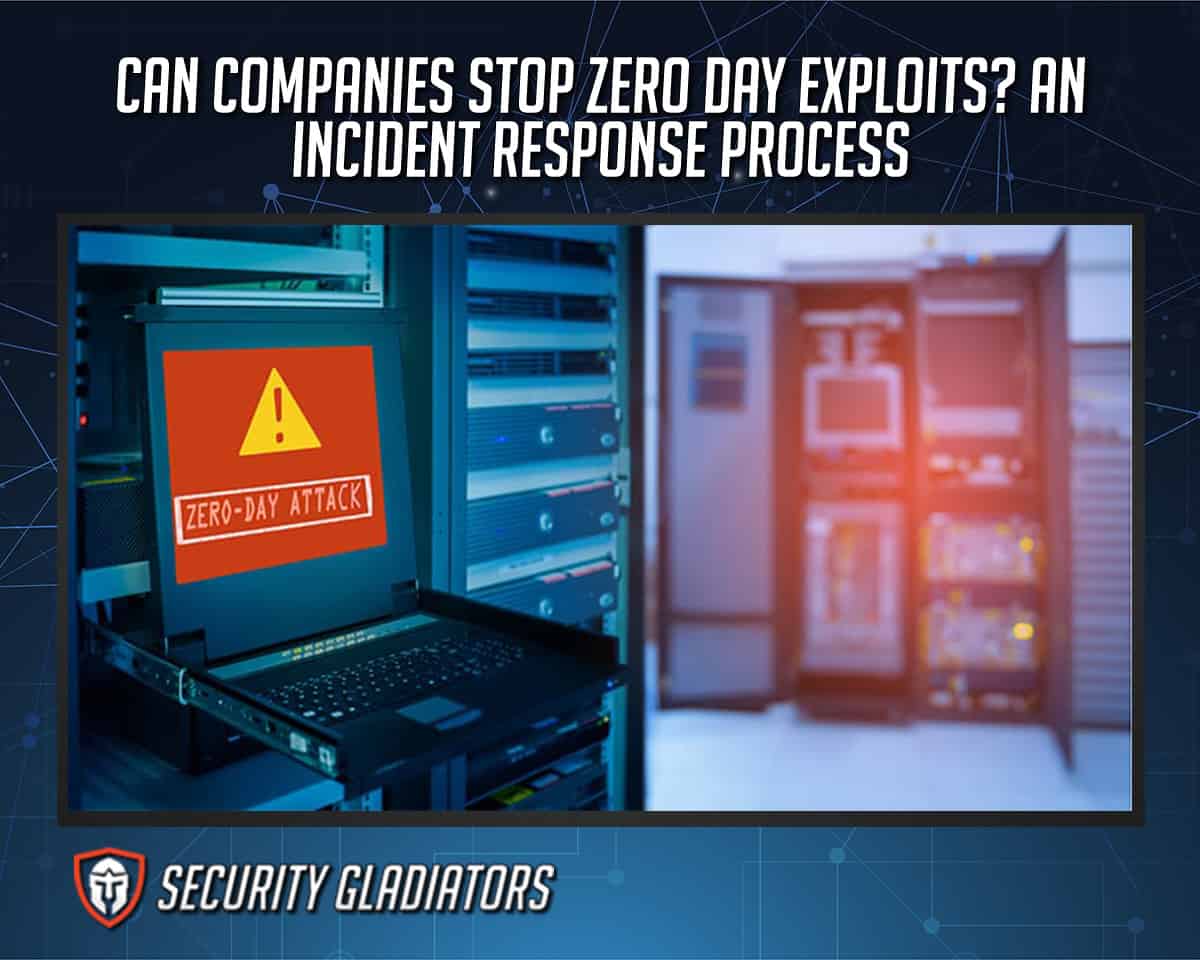Zero-day attacks are a major cybersecurity hazard. This type of threat exploits undisclosed software vulnerabilities before software or antivirus providers can fix them. Zero-day assaults enter a system without protections, allowing administrators zero days to patch the exploited security weakness.

Table of Contents
What is a Zero-Day Attack?
The term “zero-day attack” refers to an assault by hackers that uses a newly discovered vulnerability for which there is currently no patch. By launching an assault on “day zero,” a cybercriminal reduces the likelihood that an enterprise will discover and respond correctly.
Numerous firms’ security strategies are built on detection, which requires the capacity to recognize an assault as malicious. Unfortunately, signature detection is ineffective against zero-day attacks because the necessary signatures have not yet been developed.
Thus, zero-day attack risk management is aimed at prevention.
How Does a Zero-Day Attack Work?
Depending on the nature of the discovered issue, attackers must use specific exploits to take advantage of the vulnerability. For example, a single zero-day could be utilized in several exploits. A man-in-the-middle attack, for instance, may be used to steal information and launch a second XSS attack.

The process of exploiting a zero-day vulnerability begins with discovering the flaw. After that, any part of a company’s infrastructure could be at risk, from hardware to firmware to software. A zero-day attack typically consists of the following stages:
- First, the developers release a program or update with an unknown vulnerability.
- After downloading the source code from the repository or scanning the software, an attacker finds a vulnerability.
- The vulnerability is exploited with tools and resources. This could be either custom-coded software or utilities existing in the wild.
- Although attacker behavior may go undetected for years, researchers, the public, or IT experts will eventually notice and report it to developers.
The word zero-day refers to the length of time developers have to implement a fix for the vulnerability. At the time of discovery, developers have had no time to remedy the vulnerability.
This is important:
A zero-day exploit is no longer present when a patch has been applied. However, the vulnerability can persist when developers provide a fix if system administrators and end users don’t apply the update. The biggest cause of sensitive data breaches is unpatched systems. For example, the Equifax data breach, in which hundreds of millions of records were exfiltrated, was caused by an unpatched public-facing web server.Why are Zero-Day Exploits Dangerous?
Due to the unpredictability of zero-day exploits, many security flaws go undetected. The payload may be malicious malware that can be executed remotely, ransomware that encrypts data, stolen credentials, a DoS attack, or any other malicious outcomes. Since zero-day vulnerabilities are so difficult to spot, companies may be compromised for weeks or months before the problem is solved.
With an unidentified weakness, a sophisticated, persistent attack could target the organization (APT). Since APT attackers typically leave behind backdoors and utilize sophisticated software to move laterally across networks, they pose a unique threat. Although it is typical for businesses to believe that the threat has been eliminated, advanced persistent threats (APTs) will remain on the network until a thorough incident response and forensics analysis have been carried out.
Vulnerabilities may not originate with corporate network misconfigurations. Businesses that encourage employees to bring their devices to the office increase the potential for network security issues. The entire corporate network might become infected if a user’s device becomes infiltrated.
Note:
The longer a vulnerability is concealed, the longer an attacker can continue to exploit it. Unknown zero-day vulnerabilities may permit an attacker to exfiltrate gigabytes of information. Typically, data is exfiltrated slowly to prevent discovery, and the company detects the breach only after millions of records have been deleted.How Can Companies Stop Zero-Day Exploits?
- Use a dependable Web Application Firewall.
A comprehensive web application firewall (WAF) is the most effective technique to prevent zero-day attacks. A web application firewall (WAF) screens all incoming data to identify potentially harmful data and block it from entering the system.
The key to preventing damage from zero-day exploits is to respond promptly. WAFs stop malicious traffic before it even has a chance to exploit a vulnerability, saving time that IT teams would otherwise spend on defect detection, code sanitization, and patching. In addition, an efficient WAF must be quick to act and flexible enough to change in response to emerging threats.
- Create a detailed incident response process and plan
With the stakes so high in a zero-day assault, it’s essential to have a well-thought-out incident response strategy.
The essential components of a good incident response strategy are:
Developing a comprehensive understanding of the IT infrastructure of your company: Learn every aspect of your current systems, including their components, networks, and relative importance to the operation of your business.

Identifying and assessing system vulnerabilities: Regularly evaluate your system to identify any weaknesses and vulnerabilities. Then, work immediately to address these weaknesses to reduce risk.
Putting together an emergency response team: Create a formidable team for responding to events. Clarify the role of each team member in the incident response strategy.
Creating quick response guides: Produce reference materials that detail how to deal with various forms of attack in a hurry. Maintain an immediately accessible printout for quick reference.
Prepare for emergency recovery. Even if responding to incidents may help lessen the damage, you should still be ready to recover from a major catastrophe. Create backups of everything, and have a plan ready to roll out in case of hardware failure or other disasters.
- Monitor both outbound and incoming traffic.
Monitoring the network’s outgoing connections can also aid in preventing zero-day attacks. For example, as part of a zero-day assault, harmful bots and Trojans may be installed on outbound transfers to re-direct traffic and execute new commands on remote machines.
Pro Tip:
By using firewalls and outbound proxies, businesses can restrict such connections. By reviewing the router’s activity log, IT administrators can learn more about what kinds of traffic need to be allowed in and out of the network. Any suspect outgoing connections must be banned promptly on the router.- Threat mitigation training for staff

Basic threat mitigation skills, such as handling suspicious activity or suspicious attachments in emails, should be taught to all employees, not just those working in IT.
In particular, email attachments represent a typical entry point for zero-day assaults. For example, malicious code can be sent via email attachments that target security flaws in certain file formats and web applications. To prevent this attack, it is essential to instruct personnel on how to recognize and reply appropriately to unfamiliar emails.
How to Detect Zero-Day Exploits?
There are various methods for detecting previously unknown software bugs.
- Vulnerability assessment.
No matter how diligently a company tries to guard against them, there will always be vulnerabilities. Nessus and other vulnerability scanners can be used regularly to identify known vulnerabilities and manage them. Production systems should be scanned at least once every three months. Additionally, all new systems must be scanned before entering production. Finally, code scanning is necessary to check for common coding flaws that could provide attackers with a foothold in the system.
- Threat mitigation.
Detecting emerging threats and their TTP is an integral part of threat management. Threat hunting is a technique used in threat management that scours for signs of assault that may indicate that malicious actors are exploiting both known and previously unknown security flaws.
- Security penetration testing.
Scanners cannot identify all attack surface holes, so authorized humans must also attempt to successfully exploit code and configurations to attack systems. In addition, penetration tests can help identify more effective methods for detecting zero-day threats and responding to them.
- Log and behavior analysis.
Again, companies must assume that their systems and networks contain vulnerabilities and that malicious actors are aware of them. Teams concerned with security need to be well-versed in baseline network and endpoint activity and user behavior analysis to spot statistical shifts outside of baseline bounds. Logs from mission-critical nodes and servers must be centralized, corroborated, and analyzed. Once again, aberrant behavior connected to zero-day attacks must be considered when identifying and analyzing compromise and attack signs.
What Systems Does Zero-Day Exploits Target?
A zero-day attack may exploit vulnerabilities in numerous systems, including:
Operating systems: These are possibly the most alluring target for zero-day attacks due to their prevalence and the opportunities they provide attackers to take complete control of user systems.
Office apps: Malware hidden in docs or other files typically exploit zero-day vulnerabilities in the software used to modify them.
Web browsers: Any unpatched vulnerabilities in a web browser may permit attackers to make drive-by downloads, execute scripts, or run executable files on victim PCs.
Internet of Things (IoT): connected gadgets, including home appliances and televisions, sensors, connected autos, and factory machinery, are all susceptible to zero-day attacks. Sadly, many IoT gadgets cannot update or receive security patches.
Hardware Devices: Attackers can compromise hardware like routers, switches, and other network appliances, as well as consumer devices like game consoles, by exploiting security flaws in these products.
Can Antivirus Programs Stop Zero-Day Attacks?
Yes, they can. Comprehensive antivirus software solutions can be used to block zero-day exploits, as well as other known and unknown threats.

